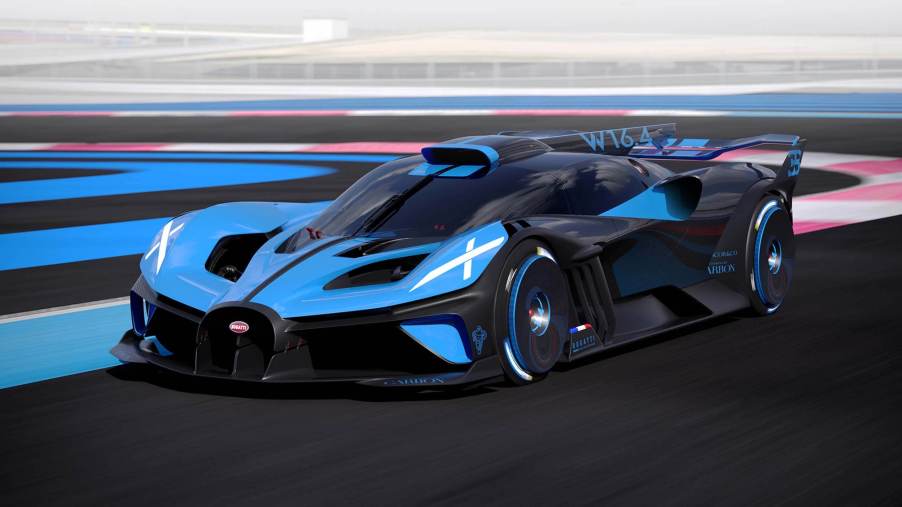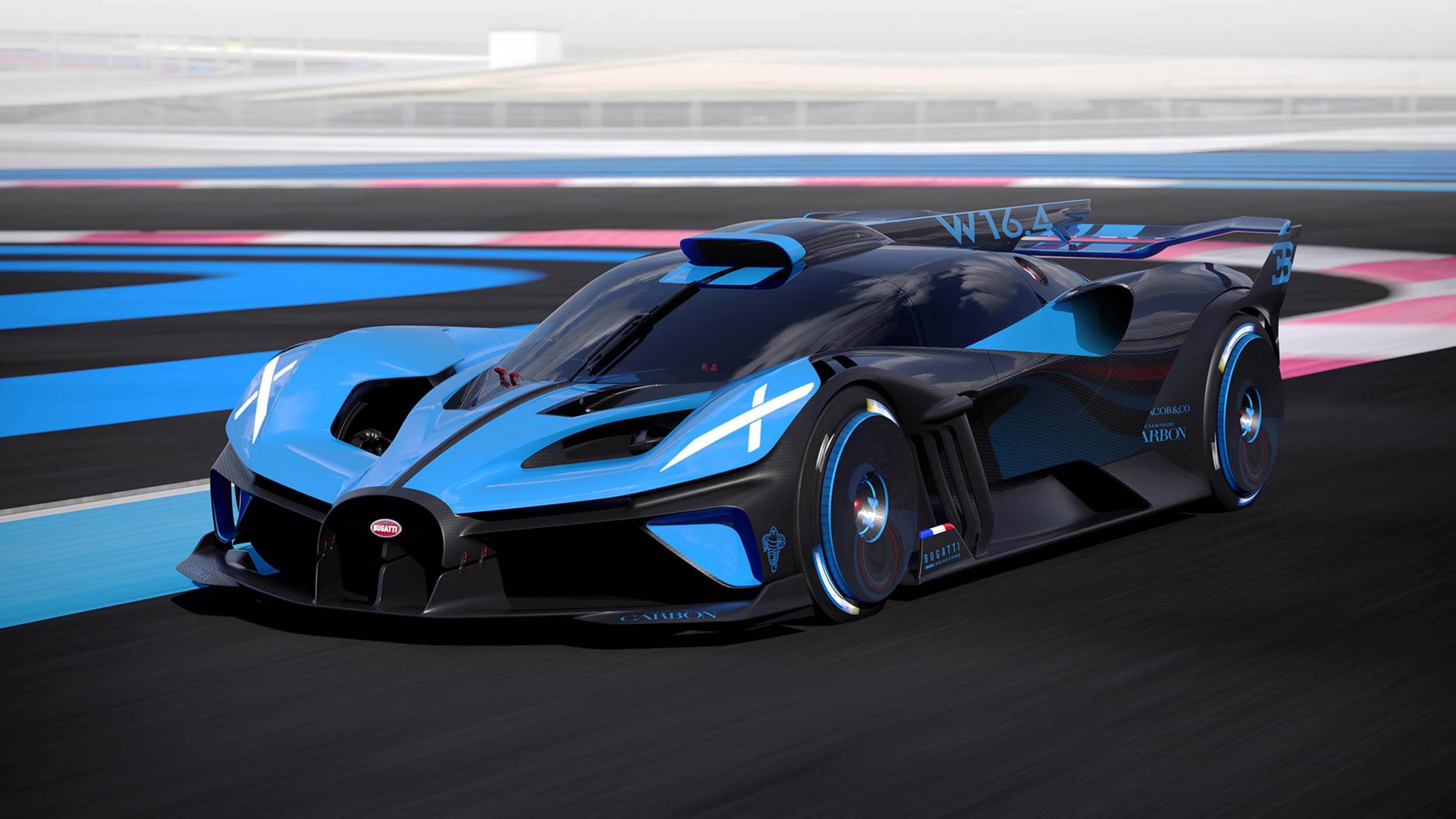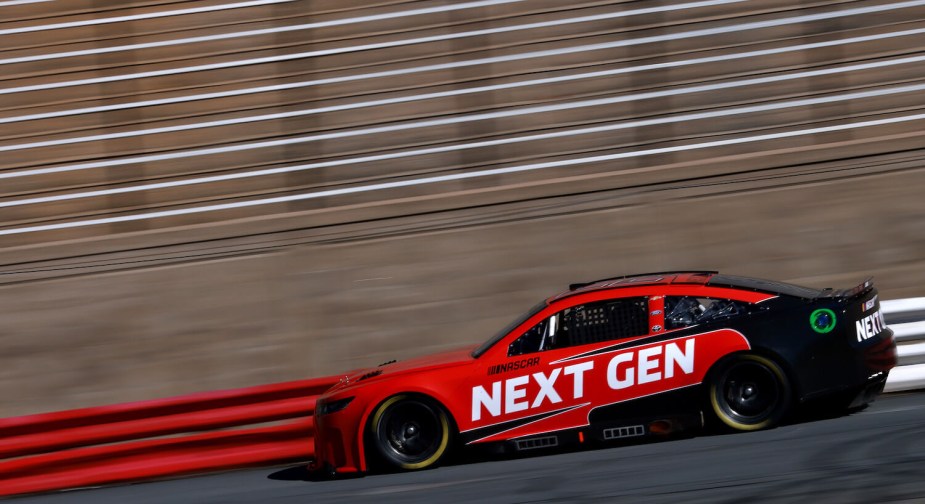
NASCAR Technology is 100 Years Behind Bugatti Race Cars
You may have heard of a little supercar manufacturer named Bugatti. This automaker was recently responsible for the first production car to hit 300 mph. But did you know that a century before Bugatti sold the first $10 million+ hypercar, it got its start building Grand Prix race cars? What’s more, the automaker’s revolutionary design philosophy is responsible for technologies sportscars use to this day. Some of these technologies–such as aluminum rims, mono-lugs, and transaxles–Bugatti race pioneered 100 years before NASCAR race cars would eventually adopt them.
Bugatti had a revolutionary design philosophy

By the end of WWI, the automobile was still a relatively new technology. The process of designing new cars was largely trial-and-error, and a single mastermind could control every aspect of the vehicle. This is the world in which a wealthy artist named Ettore Bugatti launched his self-named automobile company.
His first successful race car, the Type 13 Bugatti “Brescia” was like nothing that had come before. Most contemporary race cars were huge cars built around high-displacement engines. But the Bugatti was tiny, nimble, and boasted an excellent power-to-weight ratio. This design philosophy would guide Bugatti’s race car design until WWII.
In pursuit of lightweight cars, Ettore Bugatti sought out the most advanced materials of his day. Bugatti was actually the first company to use aluminum rims, introducing them on the 1924 Type 35–according to Bugatti.com
Ettore designed these iconic rims himself, with their eight wide spokes. They were built around a center spindle with a single, quick-change nut.
Later, Ettore Bugatti endeavored to build a car out of magnesium alloy. This ultralight metal was too volatile to weld, so Ettore had the two halves of the body each shaped out of a single piece of aluminum alloy, then riveted together along a distinctive dorsal fin. The resulting Type 57 “Aerolithe” is one of the most iconic cars in automotive history.
Bugatti pioneered new technologies

Ettore Bugatti insisted that his cars not only be lightweight and beautiful, but they also move beautifully. He always sought to improve their balance and performance. Like most cars of the day, early Bugattis had a front engine/transmission and RWD layout. But this led to a front-heavy car. So Bugatti integrated the transmission into the rear axle in a unit called a transaxle. This technology debuted in the 1929 Type 46.
It was decades later when exotic car manufacturers such as Alfa Romeo and Jaguar would follow in Bugattis footsteps with front-engine/rear transaxle RWD cars. And decades after that, General Motors debuted its mass-produced transaxle Corvette.
Is NASCAR outdated?

NASCAR rolled out its next-gen Cup car for its 2022 season. These new race cars “revolutionized” NASCAR with several technologies that Bugatti began using a century ago.
The new NASCAR cars tossed the old steel rims for aluminum alloy units, engineered for faster brake cooling. The new rims also have a center mono-lug for quicker pit stops.
One of the most significant changes to the NASCAR next-gen cars is their front-engine/rear transaxle design. This allows a full car-length underwing which in turn creates much more downforce. This downforce keeps the Cup cars stable and safe at high speeds—even while turning either left or right on a road course.
The transaxle also necessitates independent rear suspension, which allows the crews to adjust the rear tires’ camber. This makes them more stable on the super speedways.
So, was NASCAR outdated? The truth is that automobile racing is highly technical, but it is a sport and, therefore a form of entertainment. Modern motorsports all have regulations to ensure lievely competition; none feature the absolute fastest motor vehicles on the planet.
Bugatti race cars had a design philosophy more akin to modern Formula 1 than NASCAR—even though the original Bugatti went out of business before Formula 1 debuted. If NASCAR had adopted Bugatti technology from the beginning, it simply wouldn’t have been NASCAR.
Next, find out if we’ll see the modern Bugatti Bolide race car compete at Le Mans or learn more about the history of the company in the video below:



